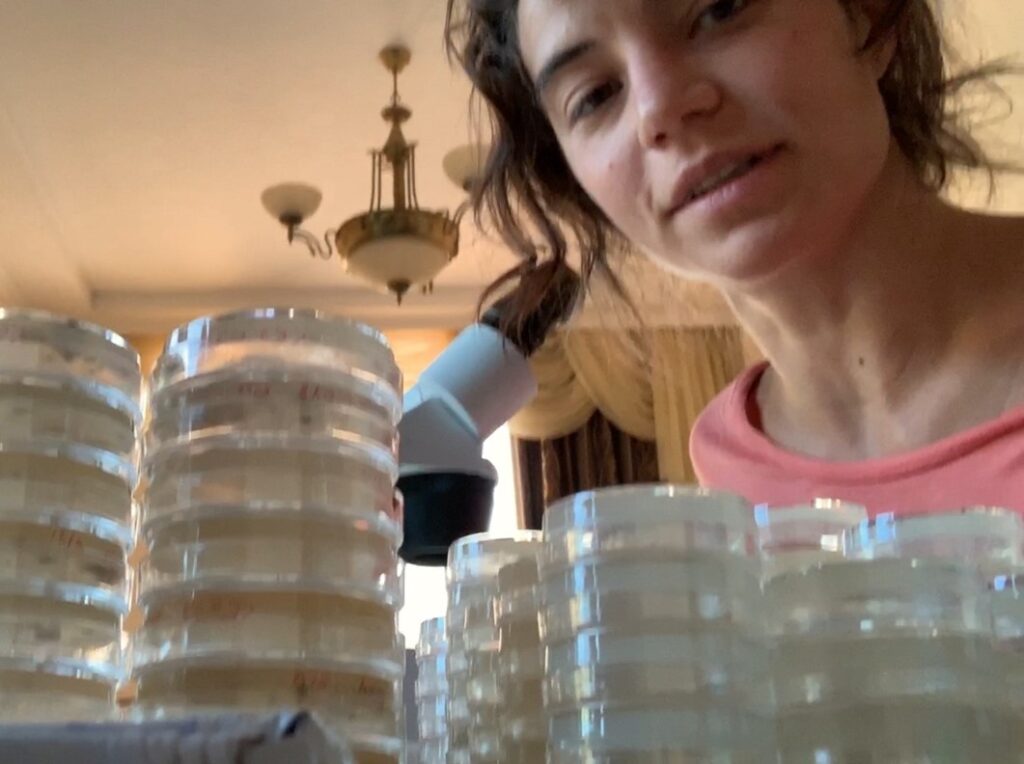 What can worms teach us about carcinogen exposure or chemotherapy?
What can worms teach us about carcinogen exposure or chemotherapy?
Sophia Tintori, postdoctoral associate in the biology department at New York University, heads to Chornobyl to find out.
Sophia Tintori is a postdoctoral associate in the Biology Department at New York University. She was trained in developmental biology, cell biology, and genetics at Brown University and the University of Chapel Hill in North Carolina. In her current research she uses microscopic nematodes collected from the wild to study the types of genetic variation that are normally found in a natural population, specifically as it impacts our ability to tolerate carcinogen exposure.
What Chornobyl’s Worms Teach Us About DNA Damage
Inside each cell of our body, DNA gets damaged about 100,000 times a day. This is totally normal — DNA is a physical molecule, subject to wear and tear. But damage leads to mutations, which we want to avoid as much as we can, so our cells (and, in fact, the cells of all living things) have machines that buzz around detecting and repairing DNA damage.
Like many features of the body, these repair machines can vary slightly from individual to individual within a species. I use nematode worms to study this natural variation in DNA repair mechanisms, because we can find worms everywhere, they’re great for experiments, and they share a lot of basic biology with us and all other animals – including DNA repair. I compare lots of worm lineages and I try to understand why one might be more tolerant to DNA damaging agents, while another might be more sensitive.
When I was first looking for mutagen-tolerant worms, I organized an expedition to the Chornobyl Exclusion Zone, where I though naturally more tolerant worms might be abundant.
And while we did see variation in the mutagen tolerance among the worms from Chornobyl, they were not broadly more tolerant than the worms that were not from Chornobyl. This suggests that nematodes are generally pretty robust to chronic radiation exposure at these levels.
But the fact there *is* a range of nematodes’ sensitivity, even though that range is much higher than the range for humans, means that we can do genetics experiments with the worms to try to understand what types of genetic differences nudge someone higher or lower in sensitivity. Hopefully this insight can help us predict when a person might be more susceptible to a certain type of carcinogen exposure, or less responsive to a certain type of chemotherapy.
